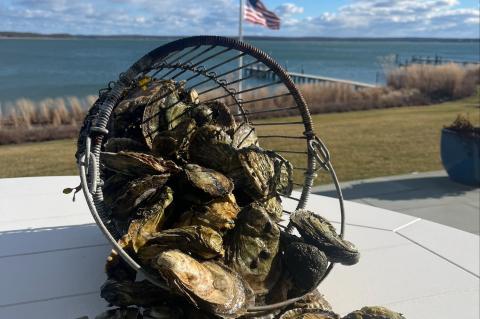I relocated the cages of my juvenile oysters to my next-door neighbor’s dock here on the east side of North Haven, where the current runs swift. Oysters grow fast and plump in strong tidal flow.
Outdoors
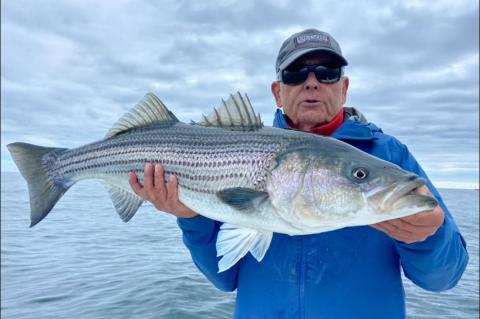 On the Water: A Look Back
On the Water: A Look BackIt felt like getting whacked in the forehead by a two-by-four. The dramatic increase in the population over Memorial Day weekend was staggering.
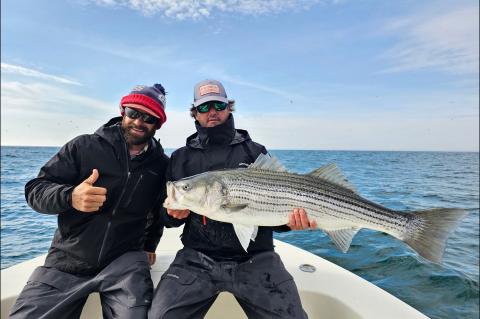 On the Water: Still High and Dry
On the Water: Still High and DryBuilt nearly 25 years ago in Arichat, a small village on Isle Madame off Cape Breton Island in eastern Nova Scotia, the Rock Water is a stout craft and has served me well over the years. But my luck finally ran out last year, and it seemed everything was breaking down on a weekly basis. First was the demise of my fish finder, followed by my GPS/radar. Then the oil cooler went kaput. Next to die was the alternator.
 On the Water: In Cod We Trusted
On the Water: In Cod We TrustedThe news I read from the National Oceanic and Atmospheric Administration a few weeks ago made me recall great times pertaining to the most iconic fish in the world.
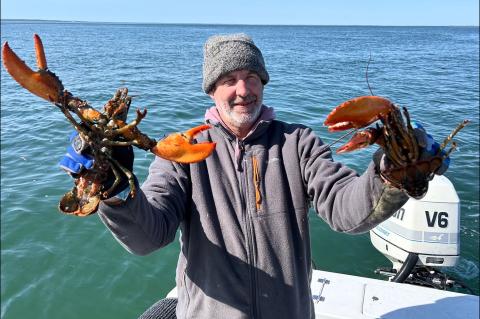 On the Water: A Spring Cleaning
On the Water: A Spring CleaningWhile my boat is still shoreside, I want to remind motorboat owners that as per 2025 law they need to attend and pass a New York State safe-boating course.
Like the passing of Vincent (Butch) Maher, whom I wrote about last week, I was equally saddened to learn of the recent loss of Helen S. Rattray. She was a local legend in so many ways.
 A New Way to Welcome Visitors at Madoo
A New Way to Welcome Visitors at Madoo“All gardens are a form of autobiography,” said the late, great Bob Dash, who began ‘writing’ his own into the soil of Sagaponack in 1967 — a story those at the Madoo Conservancy have continued in the dozen years since Dash’s death and the four decades the public has been welcomed into his two-acre botanical sanctuary.
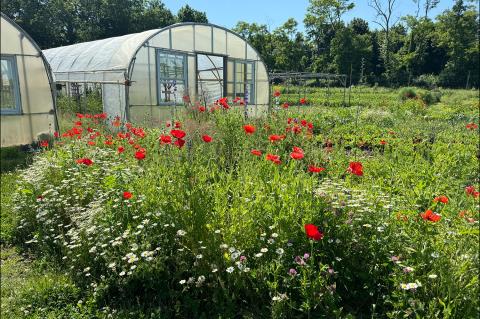 Biodynamic Gardening: A Practice Grounded in the Soil and the Celestial
Biodynamic Gardening: A Practice Grounded in the Soil and the CelestialIf you have explored natural approaches to gardening, you may have heard of biodynamics. Depending on how it’s described, it can sound either mystical or based on ancient farming wisdom.
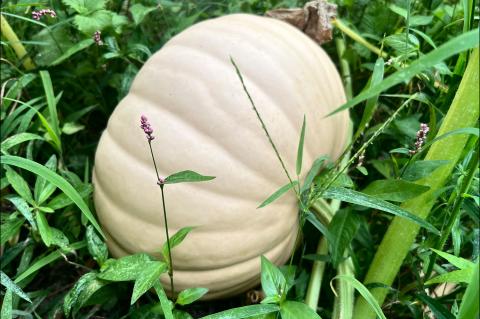 Lessons From an Unruly Pumpkin
Lessons From an Unruly PumpkinThere it was: the moment the Garden Book editor became a gardener herself.
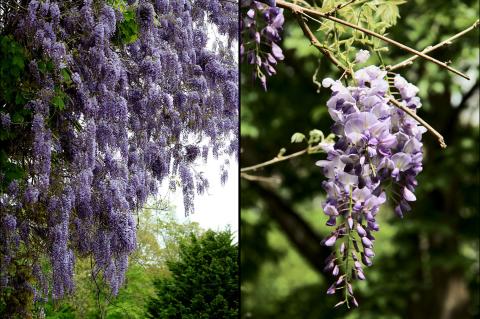 Wisteria: Picture-Perfect Cascades of Color
Wisteria: Picture-Perfect Cascades of ColorIn the Victorian-era school of thought known as “the Language of Flowers,” wisteria is associated with romance, beauty, and devotion, with a slightly ominous postscript referencing the plant’s twisting vines and warning of loving something a little too much, lest it be suffocated.
 ‘Painting With Flowers’ in Sag Harbor and Beyond
‘Painting With Flowers’ in Sag Harbor and BeyondFloral arranging and gardening have been Lilee Fell’s synergistic passions since childhood. As the owner of Lilee Fell Flowers in Sag Harbor, she grew up watching her mother create floral arrangements for garden club flower shows and her grandmother making arrangements for their church’s altar guild.
Concerned Citizens of Montauk is urging home gardeners and professional landscapers alike to stop adding synthetic fertilizer on their lawns, flower beds, and vegetable gardens.
 On the Water: A Friend Remembered
On the Water: A Friend RememberedDespite keeping fishing notes in my logbook since 1975, I can’t precisely determine the exact date I first met Vincent (Butch) Maher, but I do know it happened at some point in May of 1986, according to my haphazard writings, when I climbed aboard the Lazybones.
 TIP SHEET: Making the Most Out of Cut Flowers
TIP SHEET: Making the Most Out of Cut FlowersGeorgia O’Keeffe once said, “When you take a flower in your hand and really look at it, it’s your world for the moment.” In the spirit of the pioneering modernist painter’s hope to give that world to others, The Star spoke with two local anthophiles about extending the ‘moment’ of both store-bought and hand-harvested bouquets.
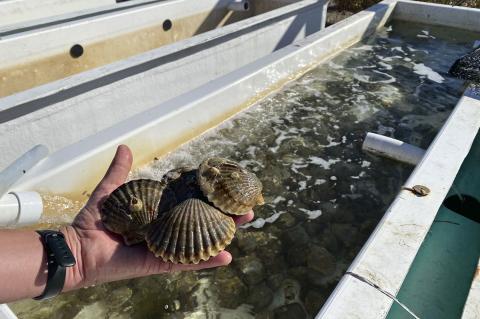 Scallops: On Hope and Heartache
Scallops: On Hope and Heartache“There’s been some pretty significant glimmers of hope — only to have our hopes dashed again,” Peconic Baykeeper’s executive director, Pete Topping, said at the start of a panel discussion the group hosted in December on this year's scallop season and prospects for the future.
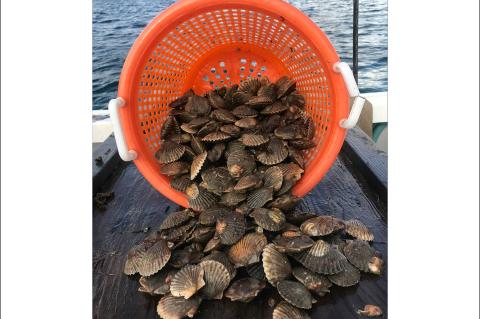 On the Water: A Scallop Conundrum
On the Water: A Scallop ConundrumDespite a few precious bay scallops being dredged from Lake Montauk, the season has been a total bust just about everywhere on the East End since it opened in early November.
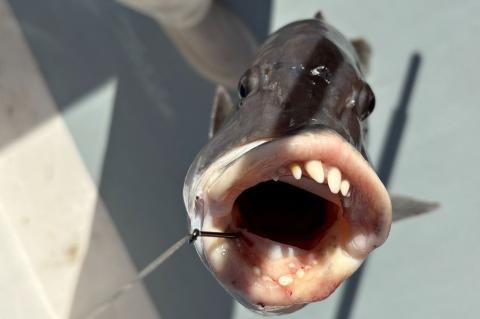 On the Water: I’m Thankful
On the Water: I’m ThankfulThere is one tradition of Thanksgiving that I miss even a decade later. My good friend Wayne Clinch of Montauk used to organize consecutive fishing charters on the Friday and Saturday after Turkey Day.
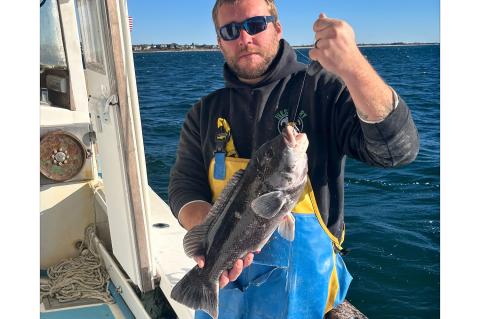 On the Water: It’s Not Over Yet
On the Water: It’s Not Over YetFor a vast majority of anglers, the fishing season has come to an end, as persistent cold winds out of the north have taken a firm hold. But the bass fishing has been great off the ocean beaches and the blackfish action has been excellent.
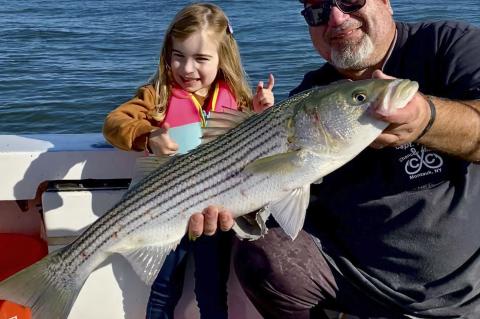 On the Water: Her Season Is Over
On the Water: Her Season Is OverThe Star's fishing columnist has taken his boat out of the water for the season, but on the fishing scene, the action remains solid, especially for striped bass and blackfish.
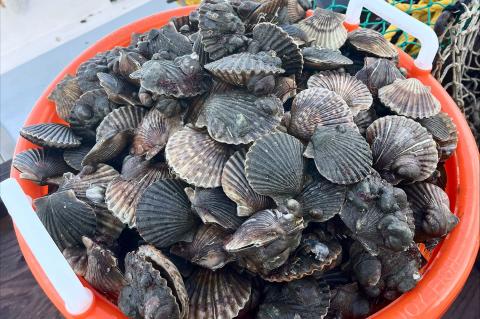 On the Water: Old Habits
On the Water: Old HabitsI can most certainly relate to the phrase “old habits are hard to break,” especially as it pertains to bay scallops. No matter how much I read year after year about the dire predictions for the five-month scallop season, which opened at daybreak on Monday morning in state waters, I still make plans to be on my Rock Water with six iron dredges in tow on opening day.
 On the Water: A Blackfish Bonanza
On the Water: A Blackfish BonanzaI was recently joined on board by Al Daniels, he of the family that has resided here on the East End for 13 generations. Daniels has known all things fishing for nearly eight decades. My wife, Terie, was also ready to catch her dinner. After a ride of more than an hour to the north side of Gull Island, the outgoing tide was still running strong when we arrived. When the blackfish homed in on our baits, they were hungry. Very hungry. The bite was on.
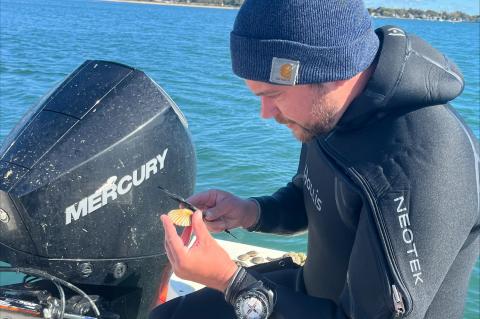 On the Water: Searching for Scallops
On the Water: Searching for ScallopsA trip in search of bay scallops with Harrison Tobi, an aquaculture specialist with the Cornell Cooperative Extension marine center in Southold, to examine the productivity, survivability, and density of the population both in the wild, and also those raised in plastic cages that were spawned at the center.
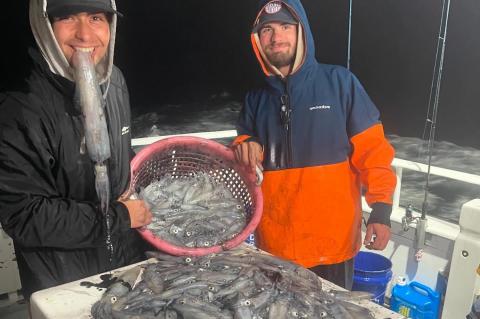 On the Water: A Step Back in Time
On the Water: A Step Back in TimeThe season for blackfish opened Friday for those who fish in Long Island Sound. Like calamari? Then head to Montauk. The night bite has been pretty consistent of late.
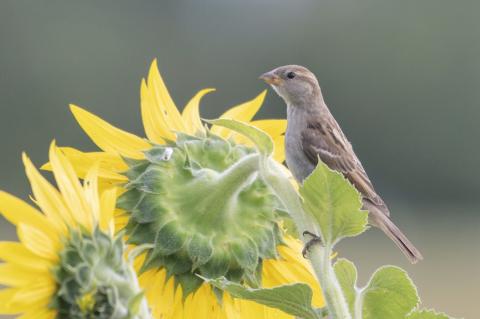 On the Wing: Love, Hate, and House Sparrows
On the Wing: Love, Hate, and House SparrowsOn the East End, we hear a lot about invasive species in the plant world, but the house sparrow was one of the original invasive species. House sparrows are bullies. They fight over dirt baths. They are nonmigratory, colonize habitat, and then profusely breed. When native migratory birds return to nest in the spring, these pugnacious birds force them away.
 On the Water: Rather Be Fishing
On the Water: Rather Be FishingLooking at my log book, I’ve only fished three times on her this year. That’s pretty pathetic. I made about a dozen runs to check on the lobster traps, but I can’t recall fishing so little in my life.
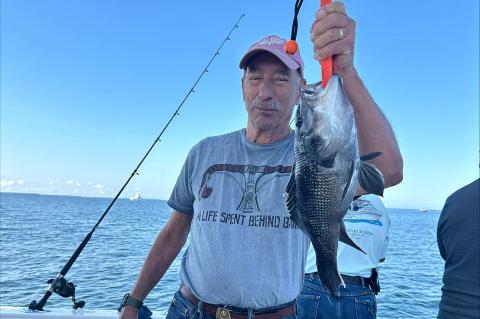 On the Water: Hooked on ‘Jaws’
On the Water: Hooked on ‘Jaws’I’ve probably seen “Jaws” a hundred times, including when it made its debut on the big screen at the East Hampton Cinema on June 20, 1975. I know the entire script word for word.
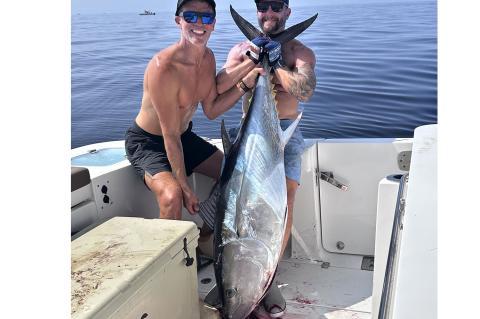 On the Water: All the Signs
On the Water: All the SignsAs we have now formally settled into fall, the changes on the fishing scene have commenced, as have the changes in weather.
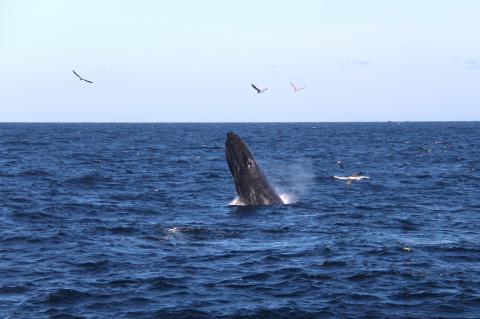 On the Water: A Whale of a Show
On the Water: A Whale of a ShowThere's been plenty of whale action visible from the beaches, and it's been a stellar week for inshore and offshore fishing, with fluke, striped bass, porgy galore, and tuna farther out.
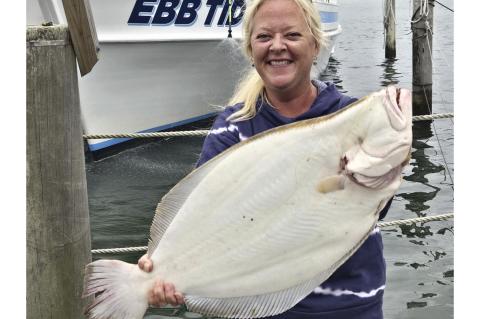 On the Water: Gilligan’s Lobster
On the Water: Gilligan’s LobsterI had a nice chuckle watching an episode of “Gilligan’s Island” in which Gilligan, in his inevitable white bucket hat, hauled in a lobster trap from the overly warm, tropical lagoon (a stage studio out in Los Angeles).
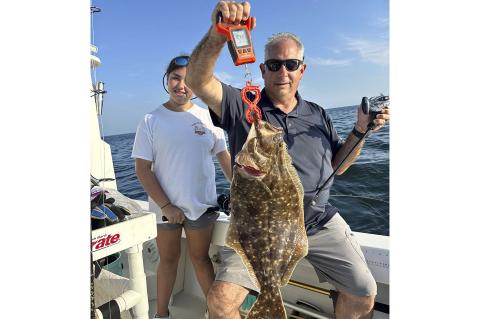 On the Water: Turning the Page
On the Water: Turning the PageThis was a weird summer. We witnessed it all, from epic rainfall to sustained heat waves to jungle-like humidity. On the fishing scene, anglers are looking forward to the change of seasons.

